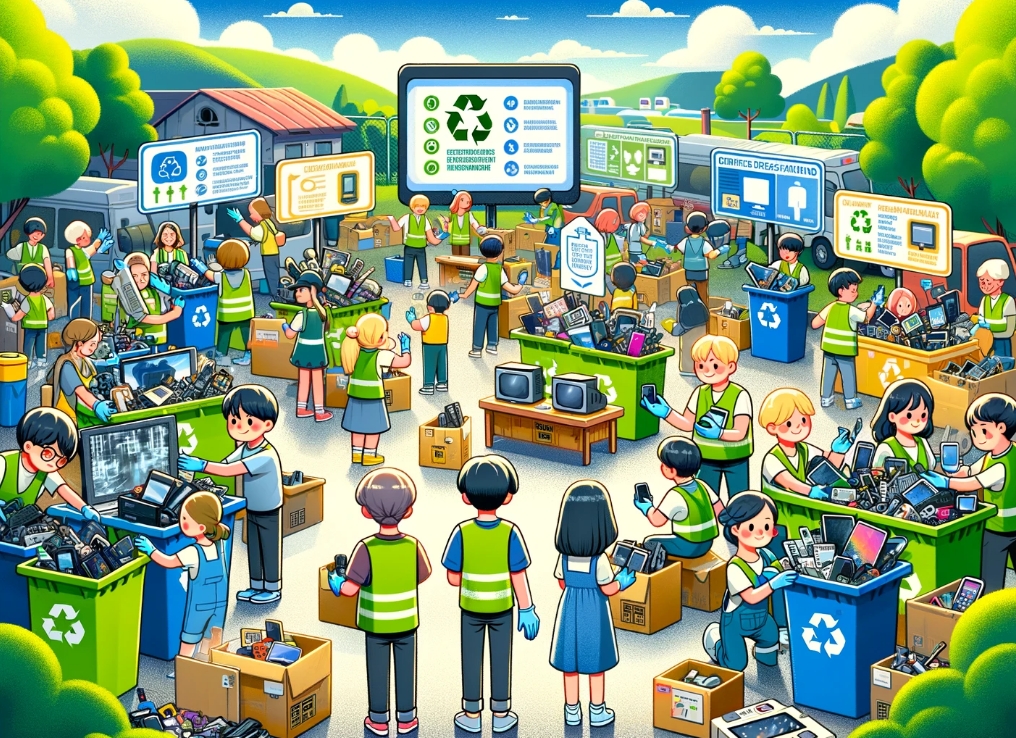
As technology continues to evolve rapidly, electronic waste (e-waste) becomes an increasingly pressing issue. In our last e-waste blog, we shared with you:
- 70% of our overall toxic waste is e-waste.
- 85% of our e-waste is sent to landfills and incinerators.
- Every year, we generate around 40 million tons of electronic waste every year (that’s like throwing 800 laptops out every second).
Our upcoming used electronics collection event on June 15th is the perfect opportunity to raise awareness about the impact of e-waste and how we can all contribute to solving this problem. By understanding what e-waste is and the challenges it presents, we can take effective steps to mitigate its harmful effects on our environment and health.
What is E-Waste?
E-waste refers to discarded electronic devices and components, including smartphones, laptops, tablets, televisions, refrigerators, and electronic toys. As technology advances and older devices become obsolete, the lifespan of electronic products decreases, leading to a significant increase in e-waste worldwide.
Why is E-Waste a Problem?
E-waste presents several environmental, health, and economic challenges. Many electronic devices contain hazardous materials such as lead, mercury, cadmium, and brominated flame retardants. Improper disposal of e-waste can impact daily life through:
Airborne Pollutants: Burning e-waste releases toxic fumes and particulate matter into the air, causing respiratory issues, cardiovascular problems, and cancer. People living near e-waste processing sites are at higher risk of exposure.
Contaminated Water: Toxic substances from e-waste can seep into groundwater and surface water, affecting drinking water supplies. Consuming contaminated water can cause gastrointestinal issues, kidney damage, and long-term illnesses like cancer.
Soil Contamination: Toxic chemicals from e-waste accumulate in soil, affecting agriculture and local food supplies. Crops grown in contaminated soil absorb harmful substances, entering the food chain and causing health issues.
How to Prevent E-Waste
Preventing e-waste starts with individual actions at home. Here are some effective methods:
Proper Disposal and Recycling:
– Use designated e-waste recycling facilities and participate in community collection events (HINT: June 15!)
– Utilize manufacturer and retailer take-back programs for responsible recycling.
Extending Device Lifespan:
– Maintain and repair devices to prolong their use. Use protective cases and perform regular maintenance (HINT: ask ChatGPT what regular maintenance and use habits might help prolong the lifespan of your device).
– Fix issues instead of replacing devices at the first sign of trouble.
– Upgrade components like RAM or hard drives instead of buying new devices.
Making Sustainable Choices:
– Choose electronics from manufacturers that prioritize sustainability and design products to be durable and easy to recycle.
– Buy refurbished or second-hand electronics to reduce demand for new products and keep usable devices out of landfills.
– Donate or sell functional devices to give them a second life.
Day-to-Day Practices:
– Educate others about proper e-waste disposal and its environmental impact.
– Advocate for policies promoting responsible e-waste management and recycling infrastructure.
– Be mindful of electronic consumption and avoid unnecessary upgrades.
– Choose multi-functional devices to reduce the number of separate gadgets needed.
Join Us in Combatting E-Waste
E-waste is a growing concern that affects our environment, health, and economy. By taking steps to properly dispose of and recycle e-waste, extending the lifespan of our electronic devices, making sustainable choices, and advocating for better policies, we can all contribute to reducing the impact of e-waste.
Join us at our e-waste collection event on June 15th to make a difference and learn more about how you can help combat e-waste in our community. Together, we can create a more sustainable future for everyone.



